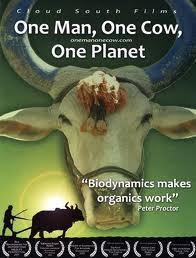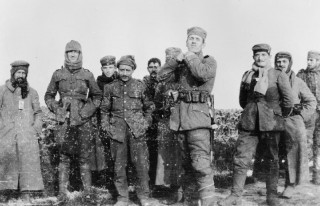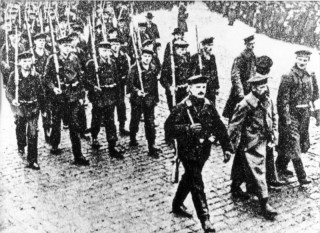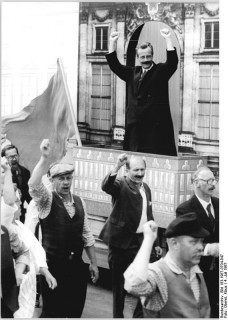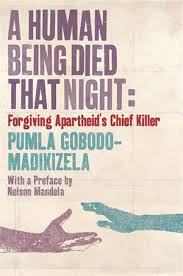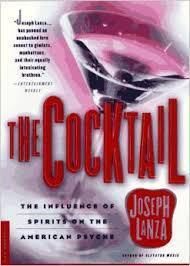Stuart Jeanne Bramhall's Blog: The Most Revolutionary Act , page 1346
December 21, 2014
One Man, One Cow, One Planet
One Man, One Cow, One Planet
by Thomas Burstyn (2007)
Film Review
Contrary to constant corporate media propaganda, it isn’t food scarcity that causes world hunger. As Thomas Burstyn so ably demonstrates in this documentary, the four main causes of world hunger are trade liberalization, industrial agriculture, military dominance and genetic engineering.
Nowhere is this more painfully evident than in India. Industrial agriculture, cleverly branded as the Green Revolution, first hit India in the 1960s. Thanks to intense pressure from the World Bank, the International Monetary Fund (IMF) and western lenders, the Indian government sought to enter the global economic market by pressuring farmers to switch to chemically maintained monoculture crops for export.
Farmers were promised that investing in chemical fertilizers, pesticides and herbicides – as well as flood irrigation – would substantially increase their yields. It never happened. After three decades, the Green Revolution’s primary accomplishments were to render India’s soils infertile by killing off essential soil organisms, deplete their water resources and leave hundreds of thousands of rural farmers virtually destitute.
In the late 1990s, the giant multinational corporation Monsanto rode to the rescue by saturating the Indian countryside with their GMO seeds, which they guaranteed would restore yields and reduce hunger. Sadly, the yields they promised never materialized. Their supposedly pest resistant Bt cotton was supposed to reduce farmers’ need for pesticide. However owing to its failure to control India’s main cotton pest, the pink boll worm, it required even more pesticide than natural cotton.
Yields were never enough to cover the purchase of new seed every year, along with chemical fertilizers, pesticides and herbicides. Farmers merely sank deeper and deeper into debt and hundreds of thousands committed suicide.
Enter Peter Proctor
Over the past five decades, New Zealander Peter Proctor, has been instrumental in reversing this trend, by helping to establish an Indian food sovereignty network based on biodynamic agriculture. The basic principle of food sovereignty is that people, rather than corporations and governments, have a natural right to control what they grow and what they eat.
Proctor is considered the modern father of biodynamic farming. The latter is an approach to organic farming first started a hundred years ago by Rudolph Steiner, and Austrian philosopher, social reformer and architect. It shares many features in common with permaculture (see Roadmap to Redesigning Civilization) and biointensive agriculture (see Farming Without Machines).
Cow dung and compost, which form the humus essential to soil fertility, are cornerstones of biodynamic agriculture. In general, Indian farmers are more receptive than westerners to biodynamic methods, as they share the same reverence for cow dung as Steiner, Proctor and other biodynamic practitioners.
Proctor and his followers rely on Steiner’s original ritualistic practices (based on planetary forces) in preparing the dung, which inoculates the soil with essential soil organisms. They also religiously follow the moon planting cycles advocated by Steiner.
Pest Control in Biodynamic Agriculture
Pest control is far easier with biodynamic methods. Healthy soil is the most important pest deterrent, as pests are far less likely to attack healthy plants. Replacing monoculture crops with diversified and companion planting also greatly reduces pest infestation. Other pest control methods include liquid manure, ground quartz (silica)*, and biological deterrents (eg ladybugs).
Environmental and Economic Sustainability
In addition to strengthening the social fabric of India’s rural communities, the food sovereignty network Proctor helped to start has improved their economic sustainability. By saving and sharing seed, cow dung and compost, they reduce the cost of their inputs to zero and cut their water requirement by 50% (humus increases the water retention capacity of soil).
In addition to substantially higher yields, organic produce sells for a slightly higher price in India due to its health benefits.
With their improved economic standing, many of India’s biodynamic farmers can afford school fees and are sending their children to school for the first time.
My favorite part of the film is where Proctor’s wife blames the horrible decisions politicians make on the crap food they eat.
The film has been removed from YouTube for copyright reasons but can be rented from Amazon for $1.99 at this link: One Man, One Cow, One Planet
The stunning Indian scenery alone is well worth the price.
*Also known as diatomaceous earth, silica destroys pests by cutting them up with its microscopic razor sharp edges.

December 20, 2014
How the CIA Launched the “Financial Pearl Harbor” Attacks on Russia and Venezuela
Interesting background on the present oil glut, caused by a surge in Saudi oil production. Apparently the Saudis have to continuously pump oil because of their decision (influenced by CIA operatives inside Saudi Aramco) to begin fracking some of their older wells. If they don’t pump oil, they run the risk of losing these wells to salt water contamination. In any case, the Saudi oil boom is expected to continue for at least five years, with the price of oil dropping as low as $10 a barrel. The sudden decline in oil prices has resulted in heavy damage to the economies of the CIA-targeted oil-producing countries of Russia, Iran and Venezuela. The good news is that it also threatens to shut down the fracking boom in the US (and New Zealand), tar sands oil production in Alberta and the Keystone pipeline.
 Originally posted on Libya 360°:
Originally posted on Libya 360°:
By Wayne Madesn
Central Intelligence Agency director John Brennan’s long familiarity with Saudi Arabia, owing to the time he spent there as the CIA station chief in Riyadh in the 1990s and his knowledge of Saudi oil operations, has paid off. Petroleum industry insiders claim that Brennan’s agents inside Saudi Aramco convinced the firm’s management and the Saudi Oil Ministry to begin fracking operations in order to stimulate production in Saudi Arabia’s oldest oil fields. The Saudis, who are not known for their hands-on knowledge of their nation’s own oil industry, agreed to what became an oil pricing catastrophe which would not only affect Saudi Arabia but oil producing nations around the world from Russia and Venezuela to Nigeria and Indonesia.
By pumping high-pressure salt water into older wells, some at a depth of three to six thousand feet, an inordinate amount of pressure was built up. The CIA’s oil…
View original 1,157 more words

December 19, 2014
The Cancer Conspiracy
Cancer: the Forbidden Cures
Messimo Mazzucco (2010)
Film Review
Cancer: the Forbidden Cures examines the deliberate effort, by the medical establishment and Big Pharma, to suppress non-phamaceutical cancer treatments. According to filmmaker Messimo Mazzucco, this is the main reason there have been no innovations in cancer treatment in the last hundred years.
Treating cancer is a big business, worth more than $50 million a year – despite the extremely poor track record of conventional cancer treatment. Both radiation therapy and chemotherapy are carcinogenic (i.e. cause cancer). Moreover because both shut down the immune system, it’s common, particularly with chemotherapy, for the treatment to kill the patient before the cancer does. According to Mazzucco, at most 5% of patients “cure” their cancer with chemotherapy.
The documentary begins by tracing how Rockefeller, Carnegie and J. P. Morgan, as barons of the chemical industry (which would morph into the pharmaceutical industry) facilitated the corporate takeover of modern medicine. Prior to 1900, American doctors mainly relied on natural healing methods involving diet and herbs, as many Asian countries still do today. All this changed after World War I when the chemical barons used their wealth and influence to win seats on the boards of major medical schools, as well as taking over the American Medical Association (AMA) and the Bureau of Chemistry (which became the Food and Drug Administration in 1927).
By the 1930s, the AMA had achieved a monopoly on medical licensing in all forty-eight states. This meant that only AMA-approved doctors, trained exclusively in drug treatments, could legally practice medicine. By 1990, the pharmaceutical industry also controlled most medical research. This was thanks to systematic cutbacks in National Institutes of Health (NIH) research that began in 1980 under Reagan administration.
The remainder of the film is a celebration of cancer pioneers who have put their livelihoods, careers and often their lives on the line to offer (often at no charge) alternative cancer treatments. Over the last hundred years, dozens of “natural” cancer treatments have successfully treated hundreds of thousands of patients. Mazzucco believes if these treatments were widely available, cancer mortality could be reduced by 50%.*
Of the treatments listed below, laetrile and bicarbonate are the most controversial, as both have a very narrow margin between the therapeutic and toxic dose. They should only be used under professional supervision.
• Essaic – first developed by Canadian nurse Rene Caisse (1988-1978) in the 1920s based on herbal treatments she learned from the local Ojibwe tribe. In the 1930s the county council allotted her a free clinic on condition that her patients were diagnosed by a licensed doctors and treated free of charge. After successfully treating thousands of patients, she lost the clinic when she refused to sell her treatment by to a group of American “entrepreneurs” for one million dollars.** In 1958, Senator John Kennedy’s doctor Charles Brush referred Essiac to Sloan Kettering Cancer Research Center to be evaluated for FDA. The research never happened.
• Hoxsey therapy – Texas businessman Harry Hoxsey (1901-1974) was the first to treat human beings with an herbal remedy his great-grandfather had used successfully to treat cancer in horses. Hoxsey set up clinics offering free cancer treatment in seventeen states for nearly twenty-five years. Thanks to his phenomenal success rate, he somehow eluded all attempts to prosecute him (for practicing medicine without a license). One prosecutor who had arrested him a hundred times secretly brought his brother in treatment and (following the brother’s recovery) became Hoxsey’s defense lawyer. When Hoxsey request an FDA review of his treatment (for possible approval), the head of the AMA, Dr Morris Fishbein offered to buy the rights to Hoxsey’s formula. When Hoxsey refused, Fishbein spearingheaded a nationwide media campaign depicting Hoxsey as a dangerous quack. After Hoxsey successfully sued both Fishbein and the Hearst newspaper empire for libel, the FDA padlocked all his clinics. In 1963, he helped one of his nurses set up a Hoxsey clinic in Tijuana Mexico.
• Gerson therapy – Dr Max Gerson (1881-1959) believed his nutrition-based cancer treatment, consisting of a non-meat diet of raw and cooked vegetables and juices, improved immune function by reducing the “acidity” associate with a meat diet. In 1946, and five patients he had cured testified before Congress in support of the Pepper-Neely Anti-Cancer Bill. The latter would have appropriated one hundred million dollars to research novel cancer treatments. After being banned from practicing or publishing in the US, he published his research in German medical journals and saw patients privately in his apartment. Following his death, his daughter Charlotte set up a Gerson clinic in Mexico. His followers have also established Gerson clinics in Germany, Spain and Japan. See Rethinking Cancer Treatment
• Shark Cartilage – In the early nineties Dr William Lane pioneered the use of shark cartilage in treating cancer owing to its antiangenic properties (i.e. it suffocates the cancer by blocking the formation of blood vessels to supply it). Despite efforts by FDA and American Cancer Society to discredit the treatment, pharmaceutical companies are vigorously competing with one another to isolate the specific therapeutic agent in the lab.
• Mistletoe – First proposed by Rudolph Steiner (1861-1925) as a cancer treatment, owing to its immune modulating properties, 100 years ago. Enormously popular in Europe, where Druids worshiped it for its miraculous healing properties. Although mistletoe doesn’t occur naturally in the US, it’s currently being studied as a cancer treatment at John Hopkins Medical School.
• Laetrile (aka Vitamin B17) – Laetrile, derived from apricot and peach pits, was first proposed as a cancer remedy in the late 1800s. Dr Ernest Krebs Jr first brought it to public attention in the 1970s. Practitioners who have prescribed it have found it effective in treating breast, lung, collar and prostate cancer. It’s believed to work by releasing cyanide and benzaldehyde when it comes in contact with cancer cells. The FDA banned it in 1977 after it was linked with several cases of cyanide poisoning.
• Sodium bicarbonate – first developed as a cancer treatment by conventionally trained Italian doctor and oncologist Tullio Simoncini. Simoncini believes cancer is merely the body’s reaction to an internal candida infection. He believes bicarb works by suppressing the infection, as the fungus only thrives in an acid environment. Because large oral doses of bicarb can be very dangerous, Simoncini infuses it through a catheter to blood vessels adjacent to the tumor. In 2003 he was stripped of his medical license and in 2006 he was given a 3 year suspended sentence for fraud and wrongful death after one of his patients die of alkalosis from an overdose of bicarbonate.
*This 2010 documentary predates a flood of research about the anti-cancer effect of high cannabidiol (high CBD) cannabis.
**They refused to agree to Caisse’s condition that they offer Essiac to patients the treatment free of charge.

December 17, 2014
Congress quietly ends federal government’s ban on medical marijuana
One good thing Congress did this month.
 Originally posted on wchildblog:
Originally posted on wchildblog:
Source: LA Times, by Evan Halper
Tucked deep inside the 1,603-page federal spending measure is a provision that effectively ends the federal government’s prohibition on medical marijuana and signals a major shift in drug policy.
The bill’s passage over the weekend marks the first time Congress has approved nationally significant legislation backed by legalization advocates. It brings almost to a close two decades of tension between the states and Washington over medical use of marijuana.
Under the provision, states where medical pot is legal would no longer need to worry about federal drug agents raiding retail operations. Agents would be prohibited from doing so.
The Obama administration has largely followed that rule since last year as a matter of policy. But the measure approved as part of the spending bill, which President Obama plans to sign this week, will codify it as a matter of law.
Pot…
View original 252 more words

Obama Normalizes Relations With Cuba
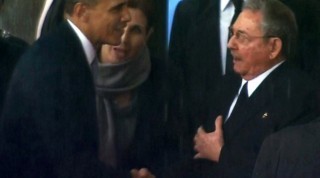
After more than a year of secret talks, Obama announced today that he’s ending the fifty-four year Cuban embargo to re-establish diplomatic ties. According to the President, the move was conditional on Cuba’s release of USAID contractor Alan Gross. Gross was arrested in 2009 and sentenced to fifteen years for distributing banned technology and trying to set up an Internet service.In addition to releasing Gross, the Cubans also released an unnamed CIA agent imprisoned in Cuba for nearly twenty years. President Raul Castro also agreed to release fifty-three Cubans the US regards as political prisoners. In return, Obama released three Cubans in US prisons on espionage charges.
Additional Measures
Additional measures, according to the fact sheet put out by the Obama administration, include re-opening the US embassy in Havana and relaxation of trade restrictions to allow American businesses to export telecommunication equipment, agricultural commodities and construction supplies. American travelers to Cuba will be allowed to use American credit and debit cards, and US owned companies will be allowed to provide services and engage in financial transactions. This is in addition to a gradual reduction in travel restrictions Obama first introduced in 2009.
Emphasis on Internet Technology
The fact sheet heavily emphasizes the export of telecommunications and Internet technology by US companies. Prior to June 2013, Home Internet connections were illegal in Cuba. Despite this recent liberalization, Internet services remain limited, slow and expensive. Only 5% of the Cuban population has reliable Internet access.
The prospect of opening Cuba up to American Internet providers and specialized services such as Google, Facebook and Twitter offers limitless opportunities to bombard the Cuban population with American advertising and propaganda, as well as introducing them to the same NSA surveillance Americans enjoy.
Embargo Purely Symbolic
The unilateral US embargo of Cuba has been purely symbolic, as it has limited economic impact. Because the vast majority of the developed world trades with Cuba, US businesses routinely bypass the embargo with help from other countries.
There is strong international pressure for the US to end the Cuban embargo. On October 28, 2014 the UN General Assembly voted for the twenty-third time to condemn the economic boycott. As usual, the only two countries opposing the declaration were the US and Israel.
Pope Francis, another strong advocate for lifting the embargo, has been instrumental in the secret negotiations.
Waning Influence of Cuban-American Lobby
Until recently, Obama and the Democrats have bowed to pressure from a powerful Cuban-American lobby to keep the embargo in place. In the last two presidential elections Florida’s Cuban American voted Democratic, securing the key state of Florida for Obama. However, according to the New York Times, the influence of Florida’s Cuban-Americans over national politics is rapidly diminishing. The Hispanic population of Florida is increasingly Puerto Rican, and younger Cuban-American voters with no direct memory of Castro’s Cuban takeover are more willing to support Democrats.
Republican Opposition
Obama has enacted all these changes via executive order. Only Congress can fully repeal the Cuban embargo enacted in 1961. Speaker John Boehner and other Congressional Republicans have vowed to block legislation lifting the embargo.
photo credit: haveeru.com.mv

December 15, 2014
Suppose They Gave a War and No One Came?
The 2014 Christmas Truce
2014 year marks the 100th anniversary of the Christmas truce during World War I. On December 25, 1914, two-thirds of the Western Front (roughly 100,000 British and German troops) spontaneously exited their trenches to exchange chocolate, cigarettes, brandy rum and souvenirs. They took photos of themselves together, played football (soccer) and shared gripes about the war and their superior officers. In some areas, the truce continued for days.
Short truces between British and German units dated from early November 1914, when static trench warfare began. The close proximity of trench lines made it easy for opposing armies to shout greetings to each other. It seems to have been the most common method for arranging informal truces during to attend to the wounded and collect the dead for burials. Several British soldiers recalled instances of Germans asking about the outcome of important football matches.
This 1981 BBC documentary features interviews with two British veterans of the Christmas truce. One vet describes how his unit pre-scheduled a second truce on New Year’s Day because the Germans wanted to see how the pictures turned out. Because they traded caps and jackets, it’s impossible to distinguish the opposing armies in the photo above.
High Command Livid
Soldiers naturally wrote home to their families about the impromptu truce. The British high command was livid when the New York Times broke the story on December 31, 1914.
Over the next three Christmases they issued strict orders that any troops who fraternized with German soldiers would be court martialed for treason. Despite the dire warnings, a few British troops participated in spontaneous celebrations with German soldiers in December 1915.
The German Revolution that Ended World War I
Thanks to the Christmas truce, soldiers on both sides made the shocking realization they had more in common with each other than with their superior officers – despite the intense propaganda they were fed by their respective governments. In 1918, a longer better organized mutiny would force the German Kaiser to surrender to the Allies.
Mainstream history textbooks go on at length about the 1917 Russian revolution that ended Russian participation in World War I. They rarely mention that the revolution spread to Germany the following year. A combination of revolutionary fervor and severe food and fuel shortages would lead to a series of three mutinies by German sailors.
During the third mutiny, on Oct 29, sailors stationed in the port city Kiel organized armed demonstrations that spread throughout the fleet and docks. By November 3, the entire city was controlled by a revolutionary council. Success at Kiel led to huge demonstrations across Germany. Within days, scores of German towns were controlled by councils of workers, soldiers, and sailors.
As Neil Faulkner writes in 1918 How the War Ended, the revolution reached Berlin by November 9:
Hundreds of thousands were on the streets. The city was awash with red flags and socialist banners. The anti-war revolutionary socialist Karl Liebknecht addressed the crowds from the balcony of the imperial palace and proclaimed a ‘socialist republic’ and ‘world revolution.’
Once the popular uprising reached the German capitol, Kaiser Wilhelm would have no choice but to surrender to Allied forces on November 11.
Photos from Wikimedia Commons
Also posted at Veterans Today

December 14, 2014
Do We All Have a Capacity for Evil?
A Human Being Died That Night: Forgiving Apartheid’s Chief Killer
by Pumla Gobodo-Madikizela (2003)
Book Review
A Human Being Died That Night explores the political, sociological and psychological influences that lead individuals to engage in torture, assassination and other forms of state terrorism. Psychologist Pumla Gobodo-Madikizela was an adviser to South Africa’s Truth and Reconciliation Commission (TRC).* Her book is based on a series of prison interviews she conducted with the ex-commander of the apartheid regime’s death squad Eugene De Kock.
In my view, it’s of special relevance given recent calls to prosecute CIA officers involved in torturing post-911 detainees. At present, it’s fashionable to dismiss all perpetrators of heinous violence as evil psychopaths. The main value of Gobodo-Madikizela’s book is to remind us that we all have the capacity for evil.
De Kock was already in prison serving two life sentences before he made his first appearance in front of the TRC. His role was to testify in the case of five former security police who were applying for amnesty for murdering (on DeKoch’s orders) three black policeman who threatened to expose their involvement in the death of four black activists. Asking to meet with family members of the dead policemen, De Kock appeared to express genuine remorse for ordering their assassination. This gesture – as well as the clear emotional release he experienced afterwards – greatly surprised Gobodo-Madikizela. The psychologist had dismissed him as a sociopath and incapable of remorse.
The Prison Interviews
The purpose of the author’s 1997-2000 prison interviews with de Kock was to gain better understanding of the ways oppressive political systems can numb someone’s conscience to the point they can commit heinous crimes. She concludes the relationship between personal choice and societal pressure is never straightforward in a totalitarian society.
It’s quite clear from his own words that de Kock’s superiors brainwashed him into perceiving African National Congress (ANC) and Pan African Congress (PAC) activists as Communists – as opposed to freedom fighters – who were threatening to plunge South Africa into the chaotic violence Congo, Angola and Mozambique experienced following independence. The apartheid regime also systematically portrayed the battle against liberation activists as a religious war in which God was on the side of the regime. Opting out of their violent role for religious or ethical reasons was impossible. The regime dealt extremely harshly with officers who attempted to do so.
The Role of the Truth and Reconciliation Commission (TRC)
As Gobodo-Madikizela explains, some restorative process is essential when a civil war ends and victims and perpetrators are forced to live alongside one another. Merely scapegoating and locking up a few “bad apples” does nothing to remediate the psychological trauma victims have incurred, which she blames for the intergenerational cycles of violence that have plagued other African countries.
In her view, the most important benefits of the TRC were forcing perpetrators to see their victims as fully human and allowing victims to experience the rehumanization that occurs when they witness the pain of genuine remorse in the perpetrators who have wronged them. Other positive outcomes include a better understanding of the role the politics of oppression and abuse play in creating monsters who commit crimes against humanity. This recognition forces all participants to confront the not-so-pleasant potential for evil within themselves.
With brutal honesty, Gobodo-Madikizela confesses that her prison interviews forced her to confront her own potential for evil. The book relates an incident in which she stood by while fellow ANC members executed suspected police collaborators with “necklaces” of burning tires and did nothing to stop them.
Moral Exclusion
Gobodo-Madikizela concludes the most important dynamic leading individuals of conscience to commit heinous crimes is “moral exclusion” – a process in which they become convinced the targeted population is less than human. This dynamic is clearly in operation when CIA officers eagerly torture brown-skinned Arabs and when white cops beat the crap out of African Americans.
Scapegoating
The author also describes in details how de Kock was scapegoated in his 1993 trial, conducted by an Afrikaner judge and prosecutor. In several interviews he expresses resentment about being scapegoated – not only by high level officials who gave the orders but by a white middle class who enjoyed a very comfortable lifestyle by repeatedly voting for a political party (the National Party) committed to retaining apartheid.
Gobodo-Madikizela is particularly appalled by the hypocrisy of Nobel Prize winner F.W. de Klerk.** The latter vehemently opposes amnesty for de Koch, despite giving orders for him to “neutralize” the ANC, as well as medals for carrying them out so efficiently.
De Klerk and other high level apartheid leaders have consistently pleaded ignorance to the crimes against humanity committed by their underlings. In this respect, they stand out from three other regimes responsible for mass crimes against humanity: Germany’s Nazi regime, the Pinochet regime in Chile and Milosevic’s regime in the former Yugoslavia. Documentary evidence shows violence (ie torture and assassination) was encouraged and expected by the apartheid regime but never explicitly ordered (not in writing, at least). In the other three cases there was a clear paper trail connecting high level officials with police officers who carried it out.
* The Truth and Reconciliation Commission (TRC) was a court-like restorative justice body assembled in South Africa after the abolition of apartheid. Victims of gross human rights violations had the opportunity to give testimony about their experiences, and some were selected for public hearings. Perpetrators of violence could also give testimony and request amnesty from both civil and criminal prosecution.
**In 1993 de Klerk and Mandela were jointly awarded the Nobel Peace Prize.

December 12, 2014
Sign the Petition: Grand Jury Reform
As we have seen in Ferguson and New York, the grand jury process is a kind of kangaroo court that has no place in a so-called democracy.
 Originally posted on Political Film Blog:
Originally posted on Political Film Blog:
PETITION: Demand Congress pass the Grand Jury Reform Act
Dear Members of Congress: Support Rep. Hank Johnson’s “Grand Jury Reform Act,” which would require a special prosecutor in cases of police killings, in places where law enforcement receives federal funding. Please co-sponsor this critical legislation today.

December 11, 2014
Alcohol and the American Dream
The Cocktail: the Influence of Spirits on the American Psyche
by Joseph Lanza (1995)
Book Review
The term “cocktail,” which first appeared during the Revolutionary War, refers to the adulteration of whiskey, rum, gin, vodka or other hard liquor with wine or non-alcoholic beverages to disguise the bitter taste. The cocktail is as fundamental to the American dream as the white picket fence. Joseph Lanza’s short book traces the history of this distinctly American style of inebriation, emphasizing the importance of Prohibition and Hollywood in establishing the cocktail as the ultimate status symbol of the American middle class.
Owing to my family background, this book had special personal importance. Both my parents, caught up in a drinking culture that considered it pathological not to have daily cocktails, were full-fledged alcoholics by the time I was twelve.
Prohibition: a “Progressive” Cause
The rise of the cocktail culture was directly linked to urbanization, while the early prohibition movement, viewed as a progressive cause, was closely linked to the women’s suffrage. Most of the suffragettes who campaign for women’s voting rights simultaneously campaigned for the government to ban alcohol.* Anti-alcohol sentiment was strongly bolstered by the protestant work ethic that characterized early American society, and anti-immigrant sentiments against Italian and Irish newcomers who were slow to adapt to it. By the end of the nineteenth century, numerous individual states had already enacted prohibition legislation.
The Volstead Act and 18th Amendment (which undercut a Constitutional challenge), officially took effect on January 17, 1920. The Act provided that “no person shall manufacture, sell, barter, transport, import, export, deliver, or furnish any intoxicating liquor except as authorized by this act.” Because it was only loosely enforced, supplying bootleg liquor was instrumental in the rise of organized criminal gangs and the career of the Kennedy family patriarch Joseph Kennedy. By the evening of January 18th, the first speakeasy had opened in New York. Prior to 1920, women had been barred from public drinking establishments. With Prohibition, this changed and they became an established fixture in speakeasy jazz clubs.
The Celebrity Drinking Culture
Prohibition also gave rise to the celebrity drinking culture, typified by the early twentieth century writers and composers who openly frequented speakeasies. The most prominent celebrities included George Gershwin, Moss Hart, F Scott Fitzgerald, Ernest Hemingway, Cole Porter, Irving Berlin, Walter Winchel and the Algonquin Roundtable writers (Dorothy Parker, Edna Ferber, Alexander Woolcott, Robert Sherwood, Robert Benchley).
Following the repeal of Prohibition in 1933, speakeasies became cocktail cafes. With the advent of talking movies, Hollywood stars replaced writers and composers as role models in the cocktail cafes (later known as cocktail lounges) where wealthy socialites mingled with Hollywood celebrities.
In the late thirties and early forties, cocktails singers emerged to entertain them. The first cocktail entertainers were male crooners,* like Rudy Valle, Dean Martin, Cliff Edwards (Jiminy Crickett’s voice in Pinochio), Vic Damon, Frank Sinatra and Bing Crosby. They typically drank heavily while performing. Female cocktail singers, such as Peggy Lee, Abbe Lane and Julie London, wouldn’t become popular until after World War II.
The cocktail culture took off big time in the 1940s as movies, especially detective films, glamorized heavy drinking.
Advertising and Media Manipulation
The fifties and sixties saw the coming to age of the advertising industry and media manipulation in redefining the human personality. This period ushered in urban leisure drinking, when alcohol consumption became so prevalent among the American middle class that it was considered pathological not to have a cocktail. A common angle used in alcohol advertising was that drinking was an important coping mechanism in dealing with urbanization and the pressures of the sterile corporate work environment.
In the literary world, Ernest Hemingway, William Faulkner and Eugene O’Neill were all held up as visionaries who relied on liquor to liberate ideas the sobriety suppressed. During the Kennedy administration, this drinking culture would permanently bind American politics to the entertainment industry, Frank Sinatra’s “rat pack.”
Baby Boomers Reject Alcohol
The sixties and seventies would see a significant decline in the cocktail culture. Baby boomers disliked the taste of alcohol and preferred the pain-free high of cannabis.
*Thaddeus Russell explores this link at length in A Renegade History of the United States.
* *Crooning is a method of using the voice to slide up and down the scale. It was facilitated by the advent of microphone technology that allowed performers to sing in a near whisper and still be heard.
**Rat pack member Peter Lawford married JFK’s sister Pat and Sinatra campaigned heavily for Kennedy in 1960. Follow his election, rat pack members (Peter Lawford, Frank Sinatra, Sammy Davis Junior, Sid Loft, Judy Garland, Joey Bishop, Shirley MacLaine and Dean Martin) were frequent White House guests.

December 10, 2014
Uruguay’s President Publicly Shamed the U.S into Releasing 6 Detainees from the Evils of Guantánamo*
Obama keeps saying no country will take Guantanamo detainees. Uruguay called his bluff.
 Originally posted on Hwaairfan's Blog:
Originally posted on Hwaairfan's Blog:
Uruguay’s President Publicly Shamed the U.S into Releasing 6 Detainees from the Evils of Guantánamo*
By Glenn Greenwald
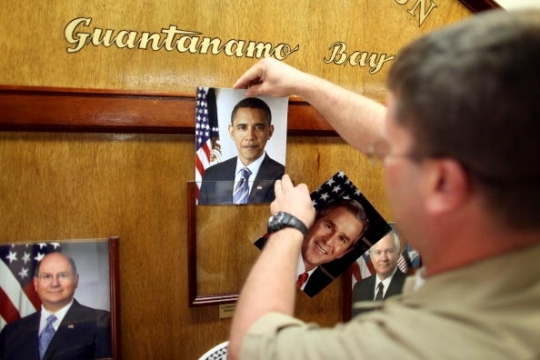
The U.S. military overnight transferred six Guantánamo detainees to Uruguay. All of them had been imprisoned since 2002 – more than 12 years. None has ever been charged with a crime, let alone convicted of any wrongdoing. They had all been cleared for release years ago by the Pentagon itself, but nonetheless remained in cages until today.
Among the released detainees is Abu Wa’el Dhiab, a Lebanese-born Syrian national and father of four who was seized by the Pakistani police and turned over to the U.S. in 2002 for what was reportedly a large bounty. He was cleared for release in 2009 – five years ago – and has repeatedly gone on hunger strikes inside the camp to protest his treatment. At the age of 43, he has become physically debilitated. As the human…
View original 1,157 more words

The Most Revolutionary Act
- Stuart Jeanne Bramhall's profile
- 11 followers


